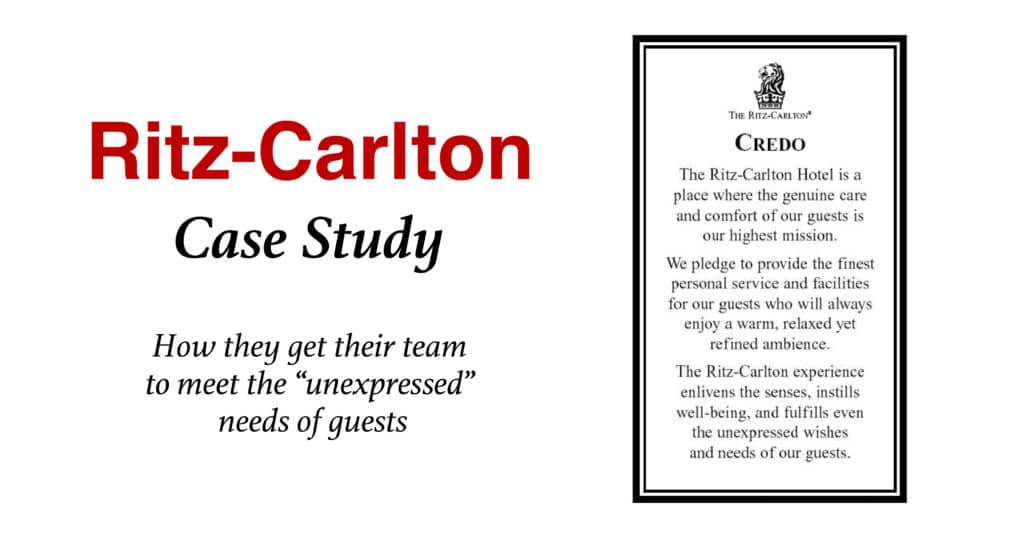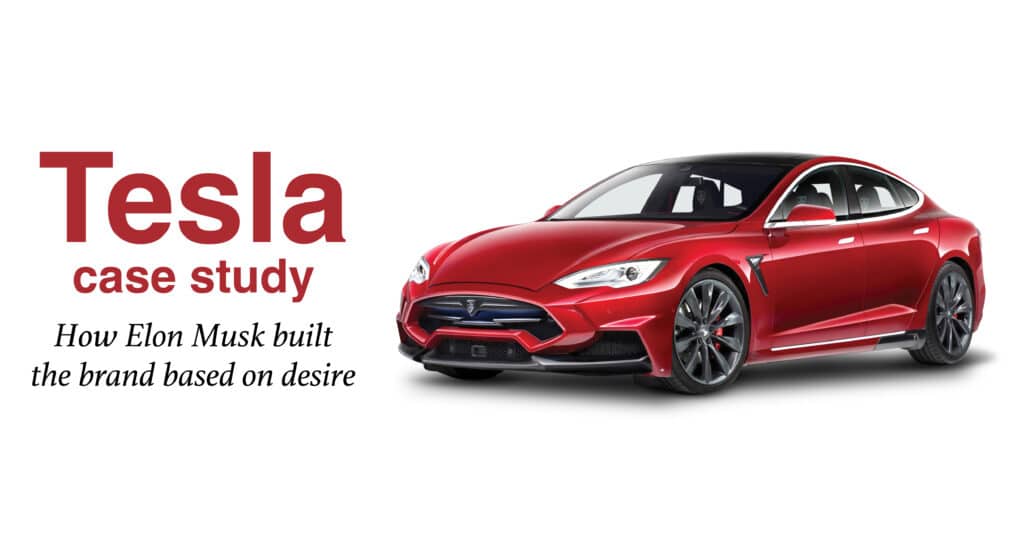Marketers can unlock valuable insights and strategies by examining brand case studies from the world’s best brands such as Apple, Starbucks, Nike, Tesla, Coca-Cola, and Ritz-Carlton. These industry-leading brands have demonstrated the power of innovative marketing approaches. They use captivating storytelling, and strong brand positioning to achieve remarkable success.
By delving into these brands’ marketing tactics and lessons, marketers can gain a deeper understanding of how to effectively reach, engage, and inspire their target audiences, ultimately elevating their own marketing game and driving growth for their brands.

Apple case study
Learning from Apple's Success: Simplicity as a Key to Marketing Excellence
Apple’s meteoric rise and continued dominance in the technology industry can be attributed to its brand strategy, which revolves around the idea of simplicity. This strategy has led to the creation of products that are easy to use, visually appealing, and seamlessly integrated into consumers’ lives. Marketers can learn valuable lessons from Apple’s success by focusing on delivering exceptional customer experiences and building a brand that resonates with their target audience.
Steve Jobs’ return to Apple in 1997 marked a pivotal moment for the company, as he introduced a brand strategy centered on simplicity. The core brand idea, “Apple makes technology so simple that everyone can be part of the future,” has driven the development of iconic products like the iPod, iPhone, and iPad. This focus on simplicity has transformed Apple into one of the most admired brands in the world.
There are several key lessons marketers can take away from Apple's success:
1. Start with the consumer experience.
Apple’s strategy begins with understanding the consumer experience and working backward to develop technology that meets their needs. Marketers should adopt a similar approach, putting consumers at the forefront of their decision-making process to create products and services that resonate with their target audience.
2. Embrace the power of simplicity.
Apple’s brand idea of simplicity extends beyond product design and permeates every aspect of the company, from advertising to retail stores. Marketers should aim to simplify their messaging, product offerings, and customer interactions to make their brands more accessible and appealing to consumers.
3. Differentiate your brand through functional and emotional benefits.
Apple’s brand positioning statement highlights both functional benefits (simplifying life, sensory appeal, and experience) and emotional benefits (optimism, feeling free, and getting noticed). By identifying and promoting these unique benefits, marketers can create a strong brand positioning statement that sets their brand apart from competitors.
4. Build a cohesive brand idea.
Apple’s brand idea acts as a guiding principle for the company, informing decisions on product development, marketing, and company culture. Marketers should develop a clear brand idea that captures their brand’s essence and serves as a blueprint for all marketing efforts.
5. Commit to innovation and continuous improvement.
Apple’s success is built on its commitment to creating groundbreaking products that push the boundaries of technology while remaining accessible to everyday consumers. Marketers should strive to stay ahead of the curve, constantly seeking new ways to improve their products and services while staying true to their brand’s core values.
To read more: Apple Case Study
By embracing simplicity and putting consumers first, marketers can learn valuable lessons from Apple’s success and apply these insights to their own brands. Doing so will help create a strong brand positioning statement, deliver exceptional customer experiences, and drive long-term growth in an increasingly competitive market. Moreover, take a look at some of the most beautiful Apple stores in the world. Finally, you can learn from Apple’s advertising from the past 40 years.
Strategic tools we include in our Apple case study
To illustrate, click on any of the models from our Apple case study.
We us our Apple Case study in our Beloved Brands Mini MBA in brand management
Below is an example video (30 minutes) from our Beloved Brands Mini MBA. We use the Apple case study to demonstrate many of our brand positioning tools.
To view, click on ARROW to play the video or the SOUND the adjust the volume.
Starbucks case study
Reviving the Customer Experience: Lessons for Marketers from Starbucks' Turnaround.
In 2008, Starbucks faced a crisis as it struggled to maintain its customer experience and loyalty. By refocusing on its core values and expanding its offerings to cater to all-day customer needs, Starbucks successfully turned its fortunes around. This case study offers valuable lessons for marketers on the importance of staying true to brand identity, prioritizing customer experience, and driving growth through strategic thinking.
Starbucks’ marketing strategy revolves around creating an emotional bond with customers, providing a consistent experience, and showcasing their commitment to social responsibility. By mastering these aspects, Starbucks has become a beloved brand worldwide.

Marketers can learn valuable lessons from Starbucks' approach.
1. Stay true to your brand’s identity.
Starbucks’ initial foray into the entertainment industry diluted its focus on coffee and negatively impacted customer experience. Marketers should ensure they stay true to their brand’s core values and identity, as this is the foundation of customer loyalty.
2. Prioritize the customer experience.
Starbucks recognized that its success stemmed from its unique customer experience, which had deteriorated due to expansion into unrelated ventures. By retraining staff and refocusing on its coffee culture, Starbucks was able to rebuild its customer experience. Marketers should always prioritize the customer experience to maintain brand loyalty and satisfaction.
3. Identify and capitalize on opportunities.
Starbucks saw an opportunity to leverage its existing retail locations to increase sales during lunch and dinner hours. By expanding its product offerings and promoting its stores as all-day gathering places, Starbucks captured a larger share of the market. Marketers should continually assess their market and identify new opportunities for growth.
4. Utilize strategic thinking to drive success.
Starbucks used strategic thinking to map out its vision, investments, opportunities, market impact, and performance results. This structured approach enabled Starbucks to successfully execute its turnaround plan. Marketers should employ strategic thinking to guide their decision-making and achieve their desired outcomes.
5. Measure performance and adapt.
Starbucks’ stock price and growth over five years demonstrated the effectiveness of its refocusing efforts. Marketers should continually measure their performance and adapt their strategies accordingly to achieve long-term success.
To read more on Starbucks: Starbucks Case Study
By learning from Starbucks’ turnaround, marketers can gain insights on maintaining brand identity, prioritizing customer experience, and driving growth through strategic thinking. These lessons can help marketers navigate challenging times and position their brands for success. You can also read our story on Starbucks location strategy.
M A R K E T I N G B O O K
beloved brands
the playbook for how to create a brand your consumers will love
Covering every aspect of brand management, it is no wonder that our readers reach for Beloved Brands multiple times each week to guide them through the challenges of day-to-day brand management.
Get ready for a mind-bending journey as we take you on a deep dive into your brand strategy. We’ll challenge you with thought-provoking questions designed to shake up your thinking and help you see your brand in a whole new light. And our unique process for defining your brand positioning will leave you with fresh ideas and new possibilities for how to differentiate your brand.
But we won’t just leave you with ideas – we’ll show you how to turn them into action. Learn how to write a brand plan that everyone can follow, ensuring that all stakeholders are aligned and contributing to your brand’s success. We’ll walk you through the creative execution process, from writing an inspiring brief to making smart and breakthrough decisions.
And when it comes tao analyzing your brand’s performance, we’ve got you covered. Our innovative methods will help you dive deep and uncover insights you never knew existed, giving you the knowledge you need to make the best decisions for your brand’s future.
But don’t just take our word for it – our Amazon reviews speak for themselves.
With over 85% of our customers giving us a glowing five-star rating and an overall rating of 4.8 out of 5.0, we know we’re doing something right. And with numerous weeks as the #1 bestseller in brand management, you can trust that we have the experience and expertise to help you achieve success.
Ready to join the ranks of the Beloved Brands community? Order our book on Amazon, Rakuten Kobo, or Apple and start your journey towards brand success today.
Take a read through our sample chapter on strategic thinking
Ritz-Carlton case study
Mastering Impeccable Service: What Marketers Can Learn from Ritz-Carlton's Marketing Strategy.
Ritz-Carlton’s success in the luxury hotel market is driven by its unwavering commitment to impeccable service and a culture that empowers employees to meet the expressed and unexpressed needs of guests. By focusing on creating unique, memorable, and personal experiences, Ritz-Carlton differentiates itself from competitors and maintains a loyal customer base. Marketers can learn from Ritz-Carlton’s approach to enhance their customer service and drive brand growth.
Ritz-Carlton has distinguished itself in the luxury hotel market by prioritizing impeccable service and creating a culture that empowers employees to deliver exceptional customer experiences.
How marketers can learn from Ritz-Carlton's customer service:
1. Empower employees to create memorable experiences.
Ritz-Carlton employees are encouraged to identify and meet the expressed and unexpressed needs of guests, resulting in unique, memorable, and personal experiences. Marketers should focus on fostering a similar culture within their organization, empowering employees to create exceptional experiences for customers that set the brand apart from competitors.
2. Encourage staff engagement and collaboration.
Ritz-Carlton’s high employee engagement and daily sharing of “wow stories” contribute to their outstanding service delivery. Marketers should prioritize employee engagement and create opportunities for staff to share success stories and collaborate on innovative customer service ideas. Engaged employees are more likely to deliver exceptional service, ultimately driving brand loyalty.
3. Turn problems into opportunities for delight.
Ritz-Carlton’s approach to addressing customer issues demonstrates the power of turning a negative situation into a memorable experience. Marketers should adopt this mindset, using challenges as opportunities to surprise and delight customers, fostering a positive brand perception and long-lasting loyalty.
4. Bake service values into company culture.
Ritz-Carlton’s success is rooted in their commitment to embedding service values into their company culture. Marketers should aim to instill these values into their organization’s culture, ensuring that employees understand and prioritize the importance of delivering exceptional customer experiences.
Ritz-Carlton has built a culture of “wow stories”
A great story that makes its way around the Ritz-Carlton world. A guest who had just left the hotel called to say that their son had left his stuffed giraffe in the room. The boy could not stop crying. The only thing these distraught parents could think of to tell their son is that the giraffe was staying on the vacation a little longer. So the staff found the giraffe and overnighted it to the boy. Most luxury hotels would have done that. But that was not enough for Ritz-Carlton.
Knowing what the mom had told their son about staying on a bit longer, the staff also included a photo album of the giraffe enjoying his extra stay. They took photos sitting by the pool, getting a massage in the spa with cucumbers on his eyes, and laying out on the beach. Imagine how the parents felt. And, imagine how many friends they may share that story with.
5. Leverage storytelling and customer testimonials.
Ritz-Carlton’s reputation for exceptional service is often shared through word-of-mouth and customer testimonials. Marketers can harness the power of storytelling by encouraging satisfied customers to share their experiences and incorporating these narratives into marketing materials. This social proof can build trust and credibility among potential customers.
To learn more: Ritz-Carlton Case Study
By incorporating these lessons from Ritz-Carlton’s marketing strategy, marketers can elevate their customer service, create memorable experiences, and foster a culture of engagement and collaboration. This focus on impeccable service will drive brand loyalty and growth in a competitive market.

To illustrate, click on the photos from our Ritz-Carlton case study.
Nike case study
Captivating Audiences with Inspiration: What Marketers Can Learn from Nike's Marketing Strategy.
Nike’s marketing success stems from its ability to inspire and evoke emotions through powerful storytelling, authentic connections with consumers, and empowering individuals to push their limits. By focusing on these key aspects, Nike has built a strong brand identity and a loyal customer base. Marketers can draw inspiration from Nike’s approach to create compelling marketing campaigns that resonate with their target audience and drive brand growth.
Nike’s marketing strategy centers around creating emotional stories, connecting with consumers on a deeper level, and empowering individuals to achieve their goals. By mastering these aspects, Nike has become one of the most beloved brands of all time.
Marketers can learn valuable lessons from Nike's approach to enhance their marketing efforts.
1. Emphasize emotional storytelling.
Nike’s marketing campaigns often feature powerful narratives that evoke emotions and inspire action. Marketers should focus on crafting emotional stories that resonate with their target audience, showcasing how their products or services can positively impact customers’ lives. By connecting with consumers on an emotional level, marketers can drive engagement and create lasting brand impressions.
Here’s a Nike ad that speaks to the average person.
To view, click on ARROW to play the video or the SOUND the adjust the volume.
2. Align with authentic influencers and role models.
Nike’s partnerships with influential athletes and role models have helped the brand establish credibility and authenticity. Marketers should collaborate with influencers who genuinely align with their brand values, using these partnerships to amplify their marketing messages and reach new audiences. This authenticity can enhance brand perception and foster trust among consumers.
Here’s a Nike Ad from Serena Williams
To view, click on ARROW to play the video or the SOUND the adjust the volume.
3. Empower and inspire your audience.
Nike’s marketing campaigns often encourage individuals to push their limits and strive for greatness. Marketers should adopt a similar approach, empowering their customers to overcome challenges and achieve their goals. By inspiring and motivating consumers, marketers can create a strong emotional connection and foster brand loyalty.
Here’s an ad to inspire women in sports.
To view, click on ARROW to play the video or the SOUND the adjust the volume.
4. Invest in your creative idea and assets.
Building your creative idea over time, across various media, products, and targets, and through multiple stories can add to the depth and impact of your marketing campaigns. By continuously developing and nurturing your creative idea, you can establish a recognizable and powerful brand presence.
To read more: Nike Case Study
By implementing these lessons from Nike’s marketing strategy, marketers can create compelling marketing campaigns that evoke emotions, forge authentic connections, and inspire consumers to take action. Focusing on emotional storytelling, authentic partnerships, and customer empowerment will ensure long-term success in a competitive market.
Tesla case study
Harnessing Innovation and Hype Marketing: What Marketers Can Learn from Tesla's Marketing Strategy.
Tesla, under the leadership of Elon Musk, has successfully utilized hype marketing to create intense demand for their electric vehicles. By leveraging the power of hype and scarcity, Tesla has established itself as a leader in the electric vehicle market. Marketers can draw inspiration from Tesla’s approach to create buzz around their products and drive brand growth.
Tesla’s marketing strategy, heavily influenced by the Apple playbook, focuses on creating hype, embracing innovation, and leveraging scarcity to fuel demand. By mastering these aspects, Tesla has emerged as a beloved brand and a major player in the automotive industry.
Marketers can learn valuable lessons from Tesla's approach to enhance their marketing efforts.
1. Embrace hype marketing
Tesla has successfully used hype marketing to create a sense of excitement and anticipation around their products. Marketers should focus on building hype around their offerings by showcasing their unique features, embracing innovation, and using social media and public relations to generate buzz. This strategy can create a sense of urgency and desire among consumers.
2. Play the long game in building your brand
Tesla’s “overnight success” took nearly two decades to achieve, illustrating the importance of patience and persistence in building a successful brand. Marketers should be prepared for the long haul, investing in product development and marketing strategies that may take time to yield results. This long-term approach can ultimately lead to breakthrough success.
3. Leverage scarcity to drive demand.
Tesla’s inability to meet initial production demands created a sense of scarcity, which further fuelled consumer desire for their vehicles. Marketers can learn from this by strategically creating scarcity for their products, whether through limited editions, exclusive releases, or timed promotions. This tactic can heighten consumer interest and drive demand.
4. Embrace innovation and differentiation.
Tesla’s commitment to innovation has set them apart from other automotive brands and attracted consumers who value cutting-edge technology. Marketers should focus on developing innovative products and marketing strategies that differentiate them from competitors, positioning their brand as a leader in their industry.
5. Embrace a customer-centric approach.
Tesla’s direct-to-consumer sales model allows the brand to maintain control over the entire customer experience. Marketers should prioritize a customer-centric approach, understanding their target audience’s needs and preferences, and tailoring their marketing strategy accordingly. By putting customers at the center of marketing efforts, marketers can create stronger connections and drive long-term loyalty.
To read more: Tesla Case Study
By implementing these lessons from Tesla’s marketing strategy, marketers can create hype around their products, embrace long-term thinking, leverage scarcity to drive demand, and foster innovation to stand out in a competitive market. These tactics can help marketers drive brand growth and establish their brand as a leader in their industry.
Strategic tools we include in our Tesla case study
To illustrate, click on any of the models from our Tesla case study.
Coke case study
Leverage the power of storytelling: What Marketers Can Learn from Coke’s Marketing Strategy.
Coca-Cola’s success is rooted in its ability to tell compelling stories that reinforce the brand’s identity and values. Marketers should focus on crafting engaging narratives that highlight their brand’s unique characteristics and connect with consumers on an emotional level.
Coca-Cola, a brand with a rich history of over a century, has remained at the forefront of advertising excellence. The secret to their success is maintaining a consistent strategy while continually delivering fresh and creative execution in their advertisements.

What marketers can learn from Coke Ads.
1. Embrace polarizing creativity and storytelling
Aim to create advertising that resonates deeply with a segment of your audience, evoking strong emotions through effective storytelling and fostering brand love.
2. Reflect and lead culture while empowering regional teams
Advertising should not only mirror the current cultural context but also strive to shape and influence it positively. Empower regional marketers to create culturally relevant content for a stronger global brand presence.
3. Build and leverage distinctive creative assets
Develop and maintain unique and timeless brand assets that create lasting brand recognition and affinity, and use them consistently across campaigns and touchpoints. Back in 1931, Coke invented our modern view of Santa and has been building it in our minds ever since.
To illustrate, click on the ads that helped Coke invent our view of Santa Claus.
4. Listen to consumers and take chances on creative ideas.
Pay attention to consumer preferences and be willing to take risks with unconventional ideas, even if they seem challenging to execute, as they may have significant potential to resonate with consumers.
5. Foster an environment that rewards creativity across the team.
Encourage and nurture a creative atmosphere that supports innovative thinking, and involve everyone working on the brand in delivering its creative expression, ensuring a cohesive brand experience.
To read more: Coke case study























